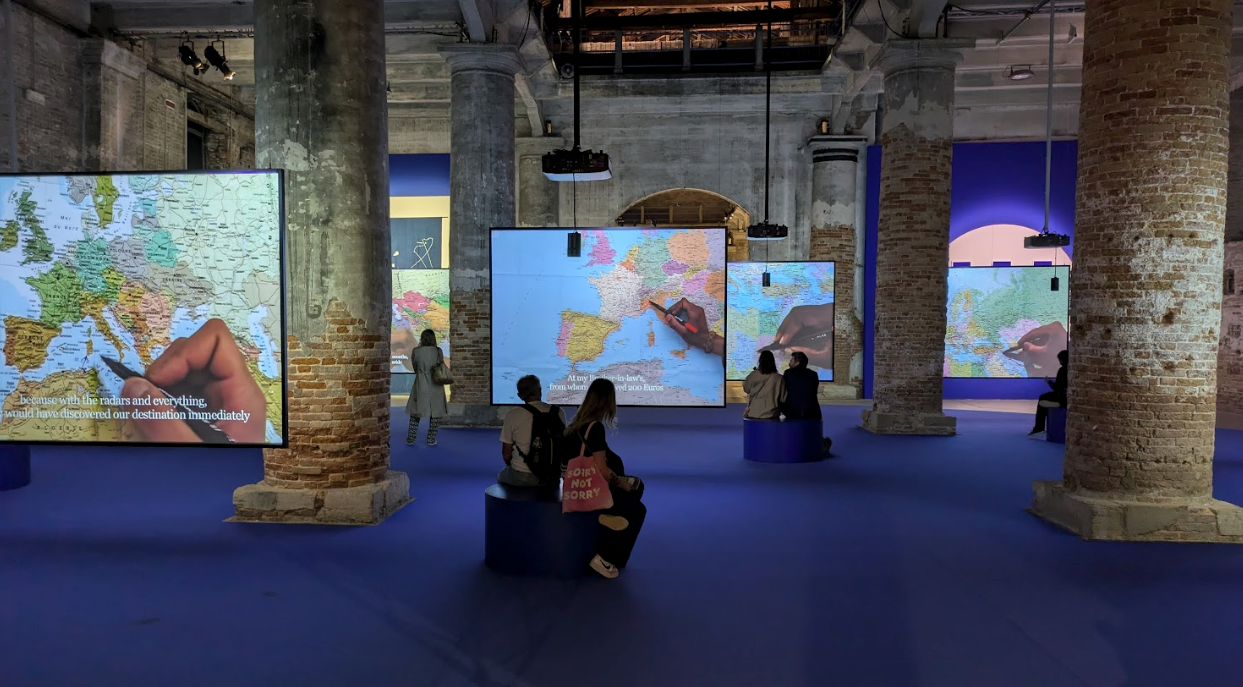Věra Jirousouvá Award Blog: Start with the Critique?
Věra Jirousouvá Award Blog
December 2024

In the autumn of 2024, Dean Kissick's text The Painted Protest: How Politics Destroyed Contemporary Art came to the forefront of the debate on contemporary art criticism. This discussion raised important questions about the role of art criticism in today's society, which is increasingly polarized by political and cultural divisions. In an article published on the pages of Harper's Magazine, Kissick criticizes the dominant trend in contemporary art that privileges political and social activist contexts, arguing that this approach undermines the aesthetic values of art and consequently distracts from the search for beauty, originality, or innovation. This is not a new idea – a similar view that art figures as an illustration of the theories of the critical scholarly community was expressed by the American journalist Tom Wolf in his book The Painted Word (1975), which coincidentally was also first published in Harper's.
Kissick's article focuses on the period around 2016, when the connection between art and politics is said to have become more pronounced. He identifies the 14th Documenta (2017), one of the most important contemporary art shows held every five years in Kassel, Germany, as a key moment. This edition, subtitled Learning from Athens, under the direction of Polish curator Adam Szymczyk, extended the exhibition beyond Kassel to Athens, Greece for the first time, responding to the Greek debt crisis of the early part of the decade and also highlighting Athens as a symbolic site connecting the Northwestern countries, Europe and the global South. The show thus aimed to reflect on geopolitical dynamics and attempt to decentralize and decolonize the dominant narratives associated with the status quo of finance capitalism.

But when Kissick visited the last Venice Biennale, he seems to have been unpleasantly confronted. His initial enthusiasm for the fourteenth Documenta, to which he was accustomed to critical conceptual art of the Cassel type, was replaced by a sense of bitterness – the atmosphere of the show spilled over to the Biennale, originally associated with “open bars, sex and glamour” (his words), to accommodate a new ethos of artistic virtue. The themes of immigration, cultural diversity, and humanitarian crises that dominated the 60th edition, entitled Strangers Everywhere – Foreigners Everywhere, contrasted sharply with the period of the 1990s and the beginning of the new millennium, when Kissick found plurality in art. In his view, this creative potential had been traded for uninventive works that conformed to prevailing social and political discourses.
Kissick's text didn't leave much time for reactions. Responses came from Berlin-based critic Martin Herbert (Are You Too Old for the Artworld, ArtReview.com), American critic Saul Ostrow (Art's Political Economy: A Response to Dean Kissick, TwoCoatsofPaint.com) and artist Ajay Kurian (Make Art Great Again? A Response to the Nostalgia and Backlash in Dean Kissick's Clickbait Manifesto, CulturedMag.com). All agreed that politicization is not a problem, but rather a natural response of art to the changes in society. The inclusion of political themes in artistic expression reflects a broader cultural shift and does not conflict with the aesthetic values of art. Moreover, they pointed to

Perhaps Kissick's frustration reflects the already classic conflict between generations - the clash between the “old” and the “young” that accompanies the natural transformations of an art scene facing threats of a new kind. Finally, it is not an either/or. Kissick seems to neglect the possibility of the coexistence of different approaches to art and the fact that the kind of art he criticizes does not exist in a simple black and white box. Art that deals with “imagination, awakening consciousness, opening portals to the uncanny, transcending its subject matter” can also deal with, for example, identity politics or critique the effects of modern technology.
The discussion of visual art has long gone beyond mere aesthetic evaluation. Art criticism is thus not just an assessment of works; it is a dialogue that helps artists and institutions articulate their meaning in a cultural and social context, and increasingly focuses on the relationship of art to broader social issues. It is a proactive and creative tool that encourages artistic growth and deeper reflection; it is a starting point, not an end to the discussion. In light of the November election result in the States, the rise of fascist tendencies in Western countries, and even the pressing situation taking place just across the domestic border in Slovakia, we cannot expect art to be concerned only with formal games. Only by redefining the role of criticism can we hope for what Kissick wants – art that is bold, innovative and imaginative. As the artist himself concludes, “There is still much to imagine.”